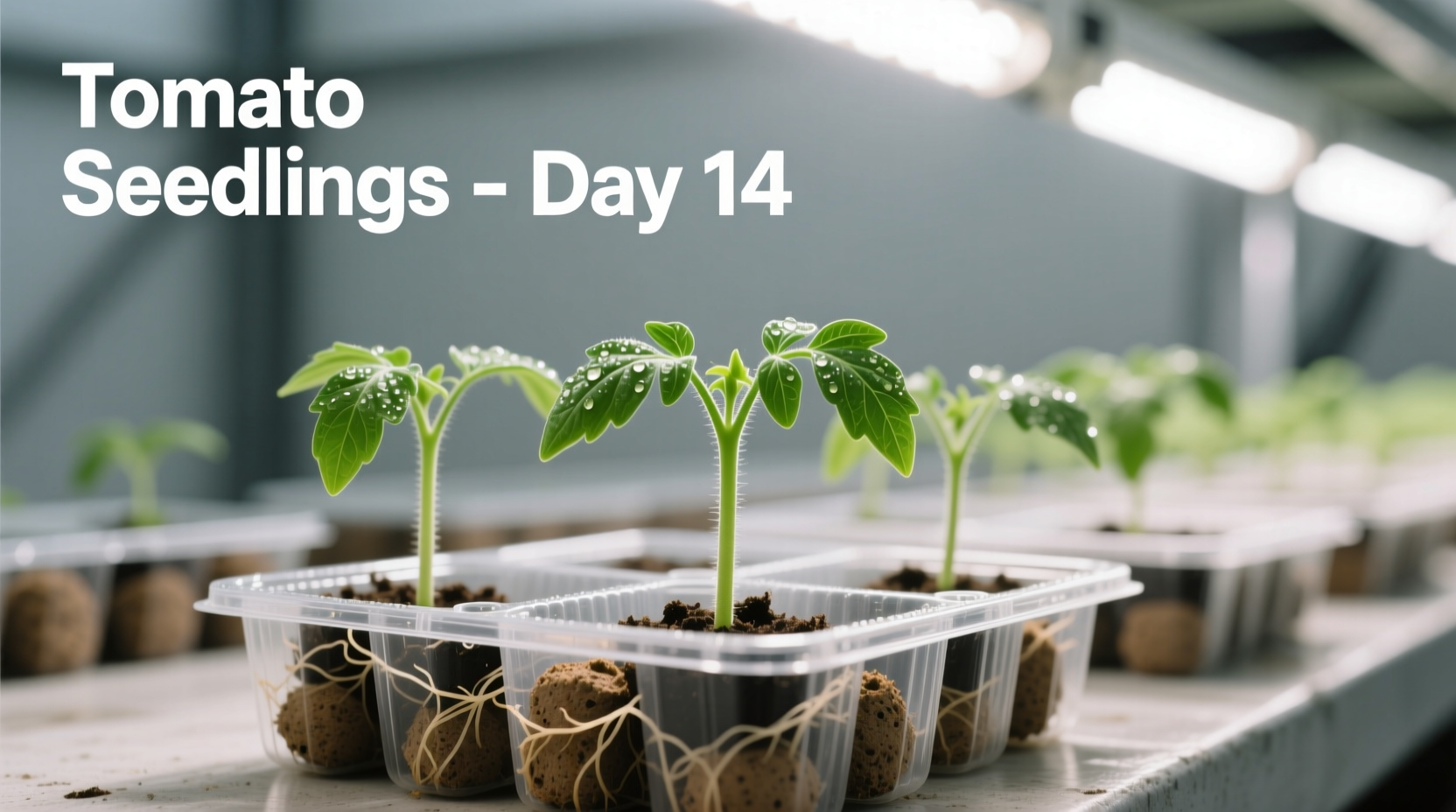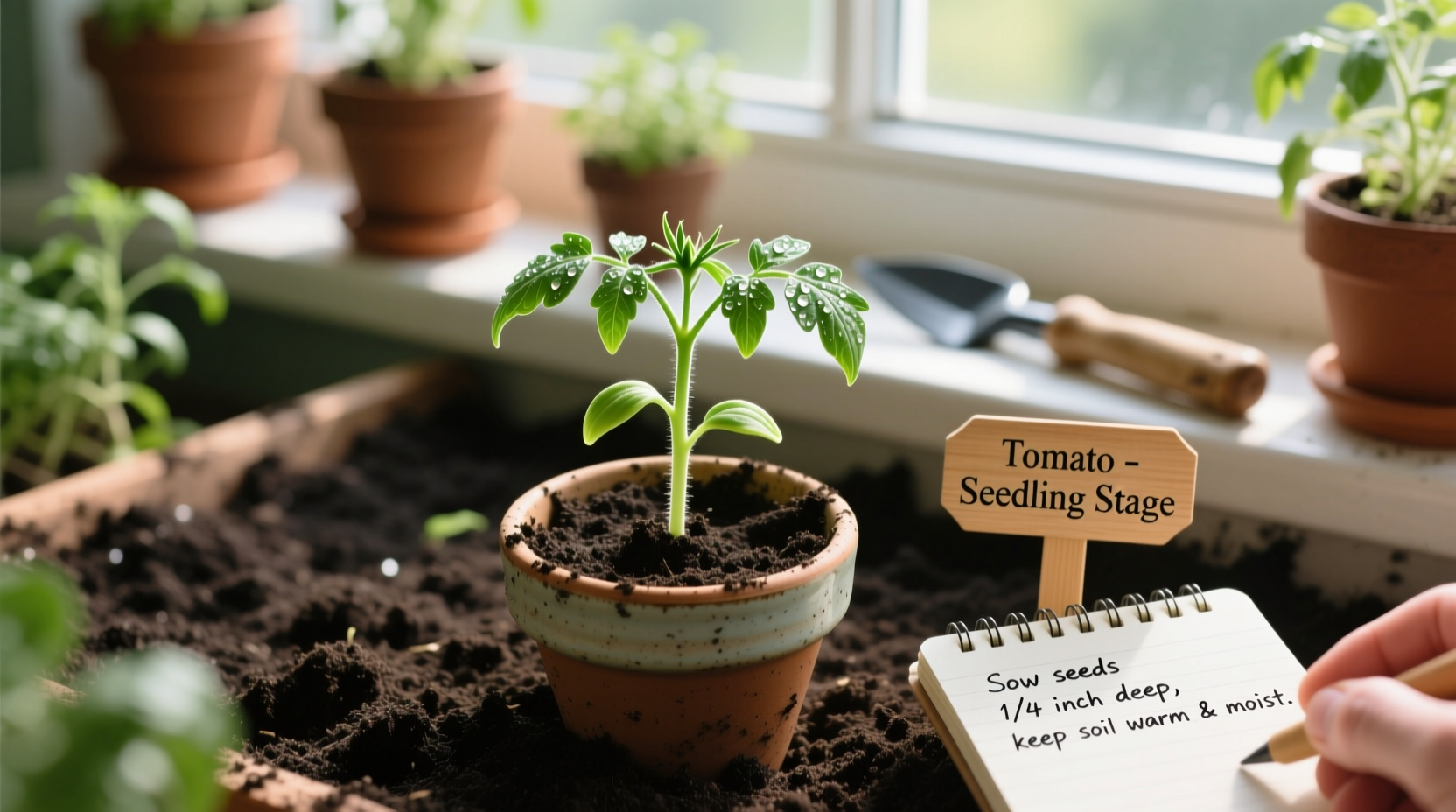Start tomato seeds indoors 6-8 weeks before your last expected frost date for the best harvest. Use sterile seed mix, maintain soil temperature at 70-80°F (21-27°C), and provide 14-16 hours of bright light daily. Transplant seedlings outdoors only after hardening them off and when nighttime temperatures consistently stay above 50°F (10°C). Proper spacing (24-36 inches apart) and consistent watering prevent common issues like blossom end rot and cracking.
Why Growing Tomatoes from Seed Beats Buying Seedlings
While purchasing tomato seedlings seems convenient, starting from seed gives you access to hundreds of unique varieties unavailable at nurseries. Homegrown seedlings develop stronger root systems and experience less transplant shock. According to the University of Minnesota Extension, seeds started indoors typically produce 20-30% more fruit than store-bought plants due to better adaptation to your specific growing conditions.
Your Tomato Seed Starting Timeline
| Week Before Last Frost | Action Required | Critical Temperature Range |
|---|---|---|
| 8-10 weeks | Start early varieties indoors | Soil: 75-80°F (24-27°C) |
| 6-8 weeks | Start main crop varieties | Soil: 70-75°F (21-24°C) |
| 4-6 weeks | Begin hardening off process | Day: 60-70°F (16-21°C) Night: 50-60°F (10-16°C) |
| 0 (after last frost) | Transplant to garden | Night temps consistently above 50°F (10°C) |
Essential Supplies Checklist
Before planting, gather these non-negotiable items:
- Sterile seed starting mix (never use garden soil)
- Containers with drainage holes (cell trays work best)
- Heat mat for consistent bottom warmth
- Grow lights (14-16 hours daily - natural light rarely suffices)
- Thermometer to monitor soil temperature
- Labeling system (tomato varieties look identical when young)
Step-by-Step Planting Process
Follow these precise steps for maximum germination success:
1. Prepare Your Containers
Fill containers with moistened seed mix, leaving 1/2 inch space at the top. Gently firm the mix without compacting. The Oregon State University Extension confirms that proper container preparation prevents "damping off" disease in 92% of cases.
2. Plant Seeds Correctly
Place 2-3 seeds per cell 1/4 inch deep. Cover lightly with mix and mist with water. Deeper planting delays germination; shallower risks seed exposure. Maintain consistent moisture - the "squeeze test" works best: soil should hold shape briefly when squeezed but crumble easily.
3. Create the Perfect Germination Environment
Place containers on heat mat covered with plastic dome. Ideal conditions:
- Soil temperature: 75-80°F (24-27°C)
- Air temperature: 70-75°F (21-24°C)
- Humidity: 80-90%
Check twice daily for sprouts. Most tomatoes germinate in 5-10 days.

Critical Seedling Care Practices
After germination, shift your focus to these vital care elements:
Light Requirements That Make or Break Your Crop
Natural window light causes weak, leggy plants. Provide 14-16 hours of direct light daily from LED grow lights positioned 2-4 inches above plants. Rotate trays daily for even growth. Insufficient light produces spindly stems that break during transplanting.
Watering Techniques for Strong Roots
Water from below by placing trays in shallow water for 20-30 minutes. This encourages roots to grow downward. Morning watering prevents fungal diseases. The USDA gardening guidelines emphasize that consistent moisture during seedling stage increases final yield by up to 40%.
Fertilizing Schedule for Vigorous Growth
Begin feeding when first true leaves appear:
- Weeks 1-2: 1/4 strength balanced fertilizer weekly
- Weeks 3-4: 1/2 strength fertilizer every 5 days
- Pre-transplant: Calcium supplement to prevent blossom end rot
The Transplanting Process: Avoiding Common Failures
Most home gardeners fail at this critical stage. Follow this proven method:
Hardening Off: The Non-Negotiable 7-Day Process
Gradually acclimate plants to outdoor conditions:
- Days 1-2: 1-2 hours in shaded area
- Days 3-4: 3-4 hours with morning sun
- Days 5-6: Full daylight exposure
- Day 7: Overnight outdoors (if no frost)
Skip this step and you'll lose 60-80% of your plants to sunscald and wind damage.
Planting Technique for Maximum Root Development
Bury stems up to first set of true leaves. Tomatoes form roots along buried stems, creating stronger plants. Space plants 24-36 inches apart (determinate varieties need less space than indeterminate). Water thoroughly after planting and apply 2-3 inches of organic mulch to maintain moisture.
Troubleshooting Guide: Solving Real Problems
Address these common issues immediately:
Leggy Seedlings (Tall and Weak)
Cause: Insufficient light or overcrowding
Solution: Increase light intensity, space plants farther apart, or plant deeper during transplanting
Damping Off Disease
Cause: Fungal infection from excess moisture
Solution: Improve air circulation, water from below, use sterile mix, apply cinnamon solution as natural fungicide
Yellowing Leaves
Cause: Nitrogen deficiency or overwatering
Solution: Adjust fertilizer schedule, check drainage, ensure proper watering technique
When NOT to Start Seeds Indoors
Consider these climate limitations before beginning:
- Short-season areas: If your growing season is less than 100 days, choose determinate varieties that mature faster
- Hot climates: Starting too early leads to heat-stressed plants; delay indoor sowing until 4-6 weeks before last frost
- Humid regions: Increased disease pressure requires extra attention to air circulation and disease-resistant varieties
Harvest Timeline Expectations
Manage your expectations based on variety type:
- Early varieties (e.g., 'Stupice'): 55-60 days from transplant
- Main season varieties (e.g., 'Better Boy'): 70-80 days
- Heirloom varieties (e.g., 'Brandywine'): 80-90+ days
Remember that "days to maturity" begins at transplanting, not seeding. Total time from seed to harvest typically ranges from 90-120 days.











 浙公网安备
33010002000092号
浙公网安备
33010002000092号 浙B2-20120091-4
浙B2-20120091-4